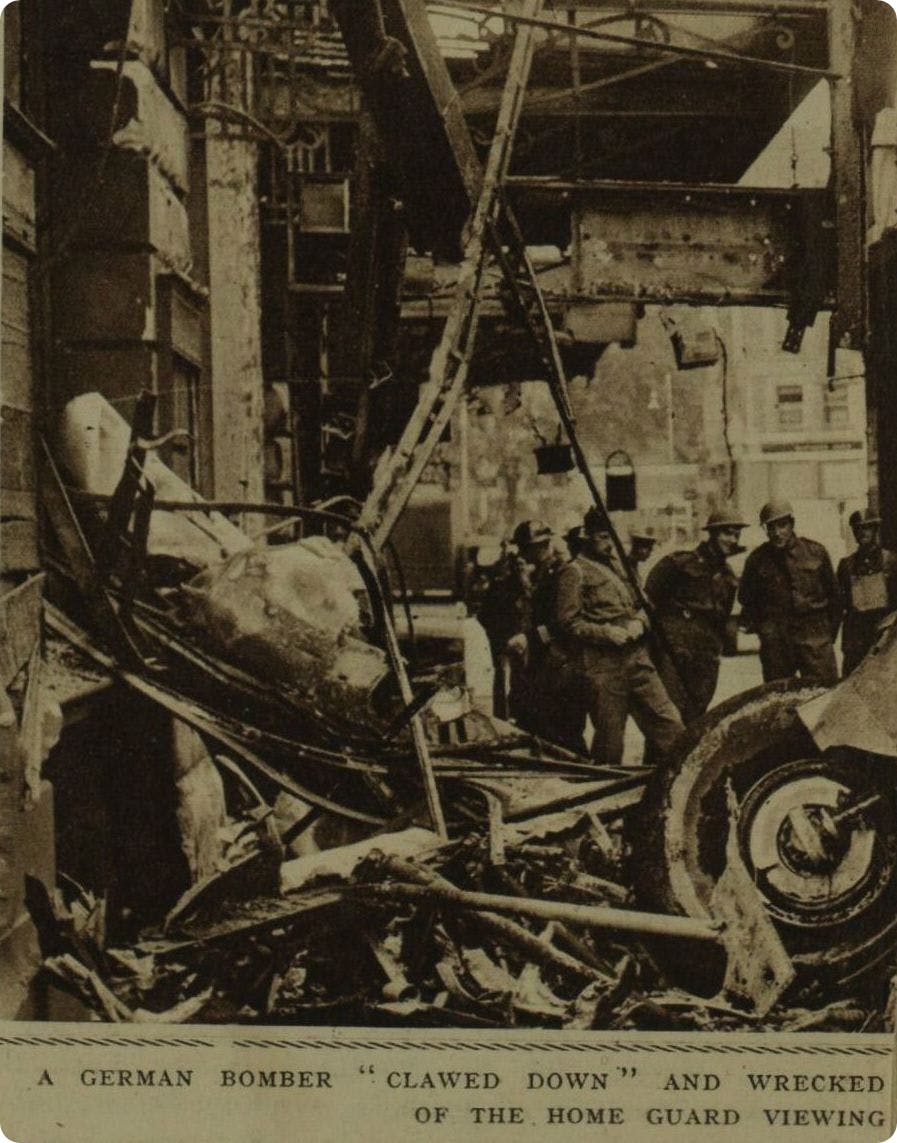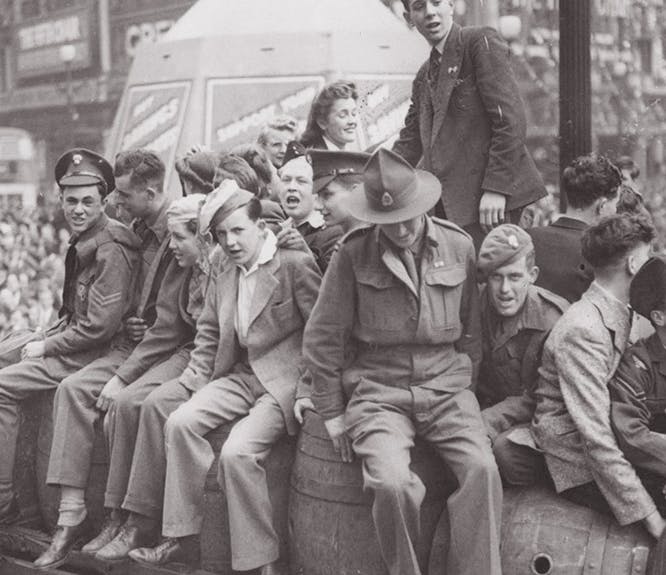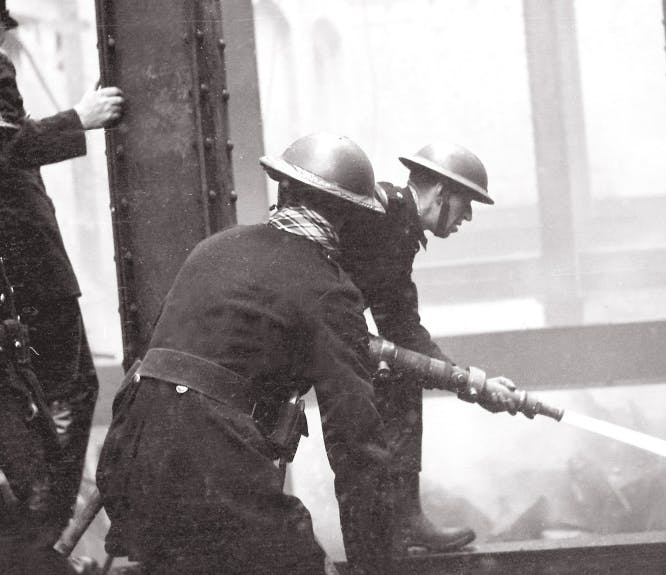How to find World War 2 ancestors that served on the Home Front
5-6 minute read
By The Findmypast Team | December 17, 2024
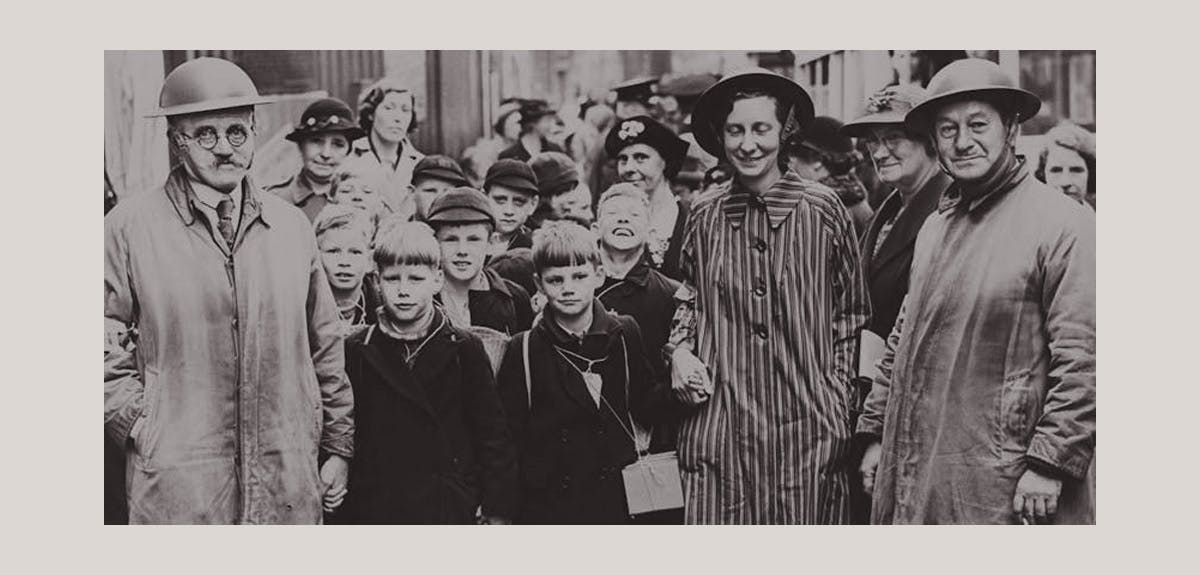
With Findmypast, you can uncover and understand the important role your relatives played in the war effort.
As bombs rained overhead, mothers sheltered with their children, holding them tight and praying for an end to the war. Life went on, as daily destruction became the new normal. Amidst the devastation of the Second World War, the Home Guard were tasked with keeping the population safe.
From patrolling the coastline to guarding factories and guarding unexploded bombs, the Home Guard’s many tasks were varied and often dangerous. While men fought overseas, thousands of men and women stepped up to keep the nation running in whatever way they could.
Was your ancestor one of these brave civilians? They may have been one of the 1.7 million men who served with the Home Guard. Perhaps they worked with the Women’s Land Army (WLA), or were among the 53,000 Scouts who took up 170 different War Service jobs.
From the tight camaraderie of daily duties to the tragedies that upended lives, you can uncover all that they experienced with the 1939 Register, our Home Guard records, historical newspapers, and the Findmypast Photo Collection.
These collections are a treasure trove of information which will help you to bring this important period of history – and your family’s role in it – into focus.
Here’s how to make the most of our records and newspapers when researching your Second World War ancestors.
What was the Home Front in World War 2?
We use the term Home Front to describe the activities of the civilian population away from the military fronts (or theatres of war, in Europe and beyond) - in particular, activities which supported the war effort between 1939 and 1945.
These activities ranged widely, including both direct support (making munitions or military uniforms) and indirect support (agricultural labour to ensure food supplies, forestry work and more).
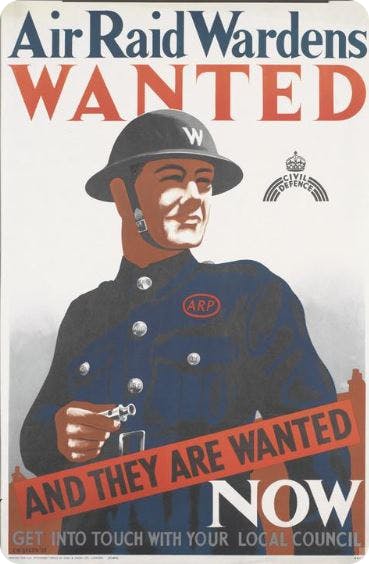
The Home Front also entailed civil defence - dealing with the effects of war on the civilian population, particularly the impact of air raids during the Blitz. There was a need to maintain law and order during the war years. To this end, a Special Constabulary was recruited.
You can uncover the role that your family played on the Home Front with several of our key World War 2 record collections.
The 1939 Register
The 1939 Register was taken as a record of the civilian population on 29 September 1939. As the events of the Second World War unfolded, many of these civilians joined the war effort on the Home Front.
We can see several Home Front roles documented in the 1939 Register, including the ARP (Air Raid Precautions) and the Auxiliary Fire Service (AFS).
If your ancestor volunteered with the AFS, they had their work cut out for them. They were responsible for watching out for air raids, warning of their coming, and then firefighting, rescue, stretcher bearing, first aid, and demolition and decontamination after air raids had hit. The AFS had over 200,000 members by September 1939 – was your relative one of them?
This type of civilian wartime activity is shown in the “See Instructions” column (column 11) of the 1939 Register. You can find it on the right-hand page of each double-spread. We have made it easy to search by putting together a drop-down list containing the most common of the roles. Simply choose the role that interests you from the list.
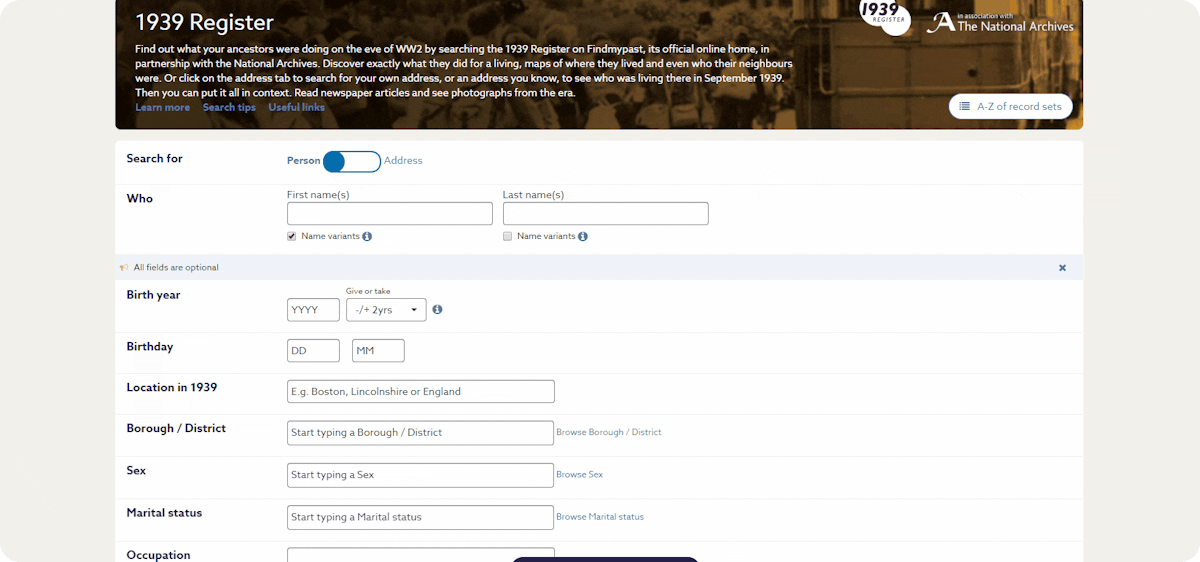
It’s worth noting that some of the roles overlap. For example, a person could be described in the 1939 Register as St John’s Ambulance or as Ambulance Service. You can apply two (or more) filters at the same time, so you can select both St John’s Ambulance and Ambulance Service and search for them together.
The National Pigeon Service
Did you know that the government founded the National Pigeon Service in 1938, to carry codes and other confidential information between allied forces?
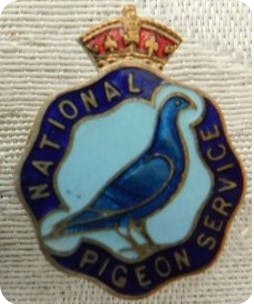
You can explore the National Pigeon Service’s records. You don't need to add any names or fill in other fields on the search page. Just search for the National Pigeon Service and it will show you all the people across the country who were involved in pigeon messaging.
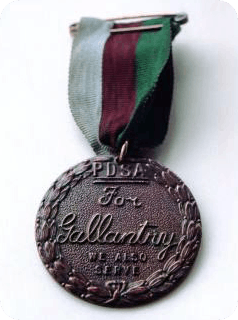
Fascinatingly, 32 pigeons received the Dickin Medal for gallantry during World War 2. These war hero pigeons include:
These war hero pigeons include:
Beach Comber
"For bringing the first news to this country of the landing at Dieppe, under hazardous conditions in September 1942, while serving with the Canadian Army."
Kenley Lass
"For being the first pigeon to be used with success for secret communications from an Agent in enemy-occupied France while serving with the NPS in October 1940."
Mary
"For outstanding endurance on War Service in spite of wounds."
Paddy
"For the best recorded time with a message from the Normandy Operations, while serving with the RAF in June 1944."
Winkie
"For delivering a message under exceptionally difficult conditions and so contributing to the rescue of an Air Crew while serving with the RAF in February 1942."
Throughout the war, a total of 16,554 war pigeons were parachuted from England to continental Europe.
The Home Guard
Another feature of the Home Front was the Home Guard. This was a volunteer militia, popularised by the BBC’s Dad’s Army sitcom, to defend Britain in the event of a Nazi invasion.
Most of the volunteers were men under or over military age (aged 42 or older). What we would now call key workers were exempt from military service, and they could also join the Home Guard. On Findmypast, you'll find the records of one county’s Home Guard battalions – those from County Durham.
You might be interested in finding out who was involved on the Home Front from your area. Select a civilian role from the list and then choose a district. You can then see all the Women’s Voluntary Service personnel, or the VADs (Voluntary Aid Detachment), for example, where you live.
Uncover Home Front stories in old newspapers
Whether for rescuing pets, putting out fires or receiving military medals, the Home Guard was a frequent fixture in both the local and national press. Our newspaper archive contains thousands of Home Front stories from your local community – perhaps even relating to your very own family members.
Try narrowing your search results to the years 1940 and 1944, selecting a county, and exploring relevant local titles. You can also search for a specific name and further narrow your search with other filters.
With Collections, you can clip, save and curate your newspaper findings. Why not get started by exploring our ‘Heroes of the Home Front’ collection today?
Photos of life on the Home Front
The Findmypast Photo Collection contains thousands of amazing photos from Britain's World War 2 Home Front. You can filter the collection by subject and choose to just explore Home Front photos.
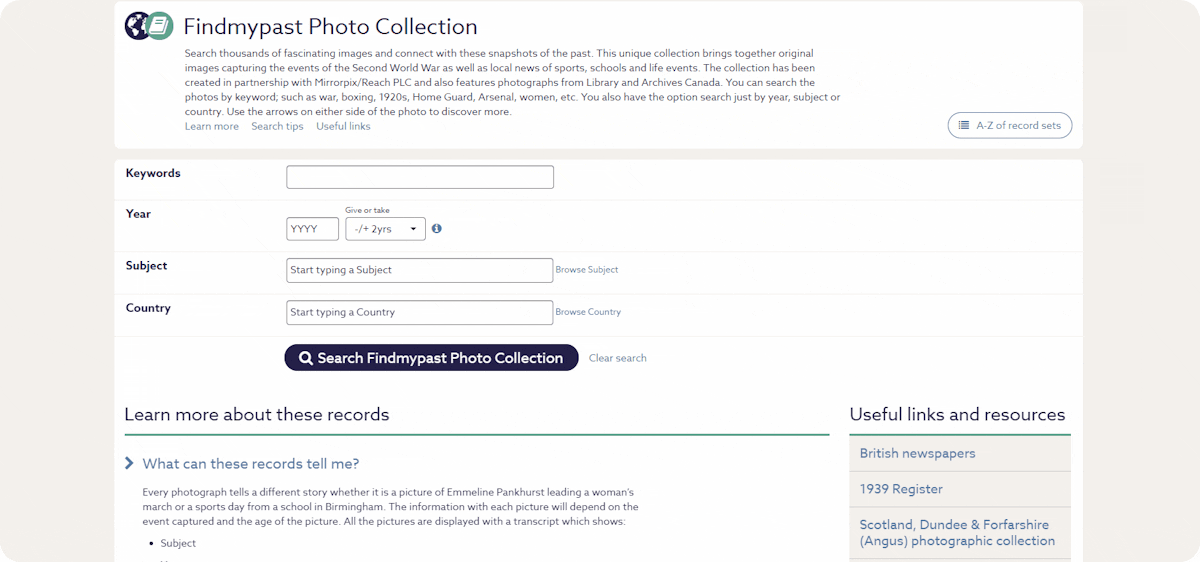
Many of the photos you'll uncover have never been published online before and offer a rare glimpse into what life was like on the Home Front.
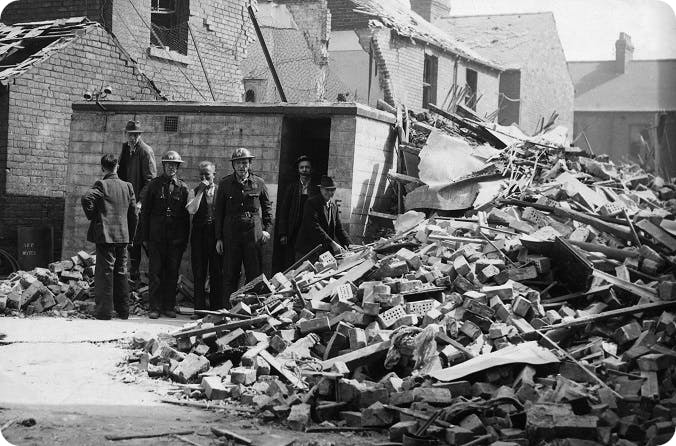
ARP personnel and Air raid wardens help to search for survivors in an East Hull street after a German raid on the city, 9 May 1941. View full-size in the Findmypast Photo Collection.
What's more, any information that was written on the back of the original prints has been captured and made searchable. This makes it easy for you to search for a name, place, or event.
